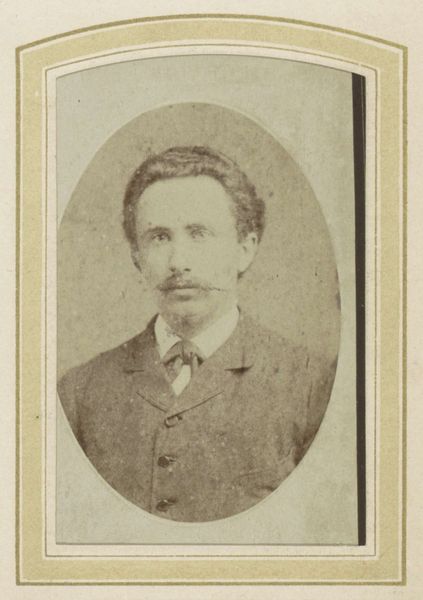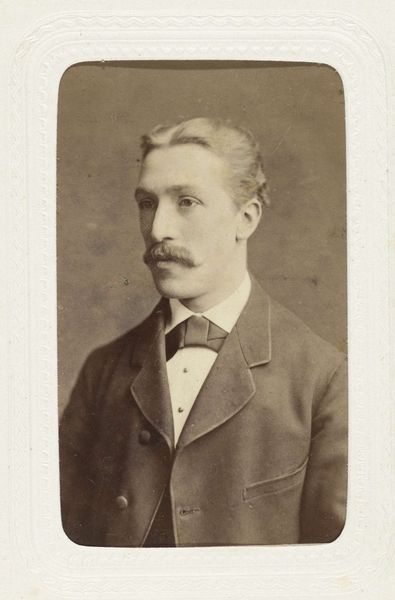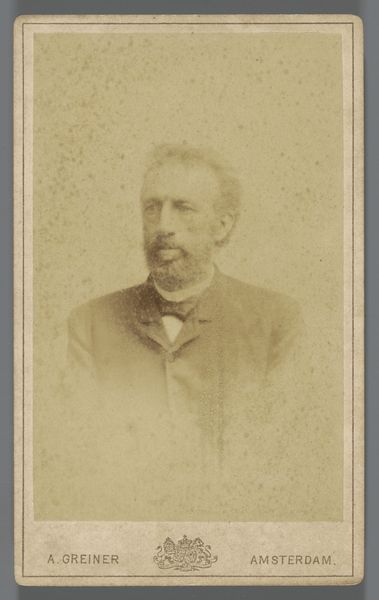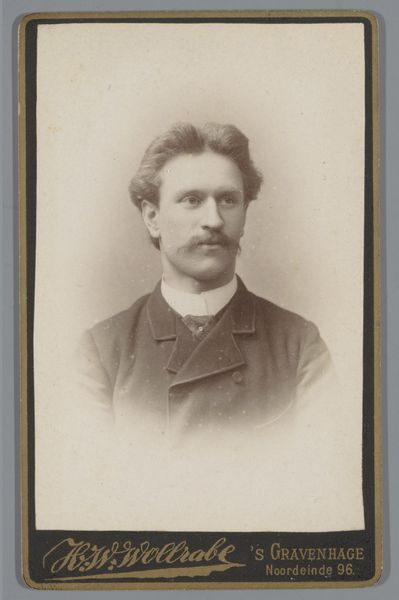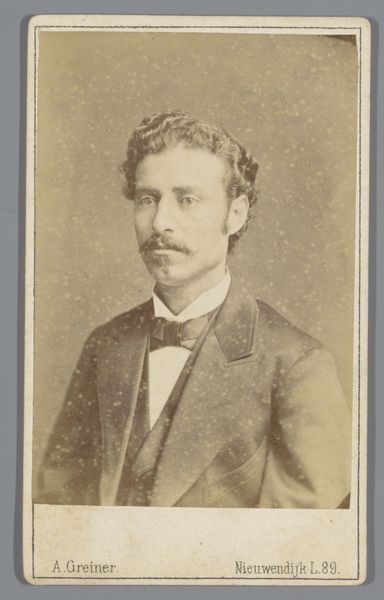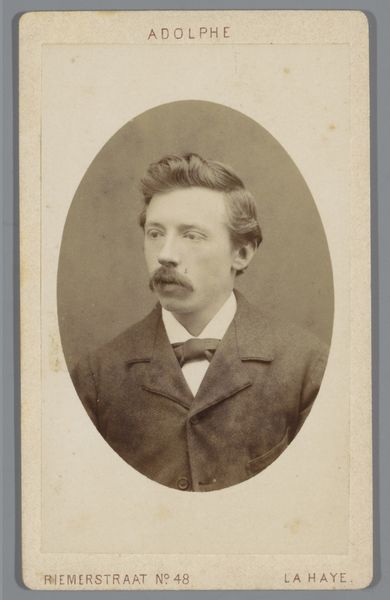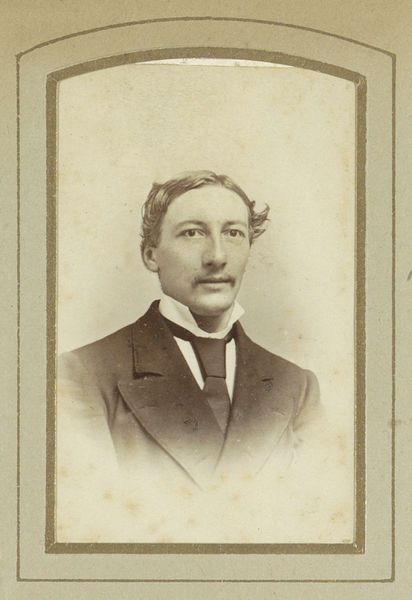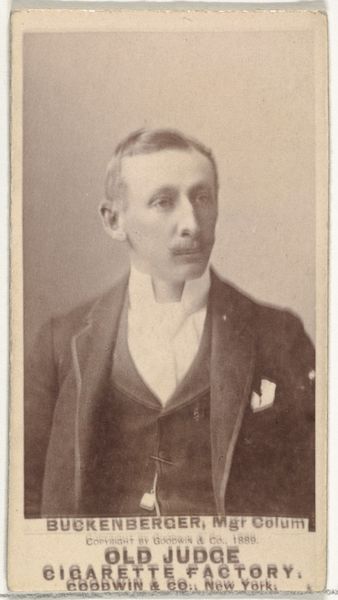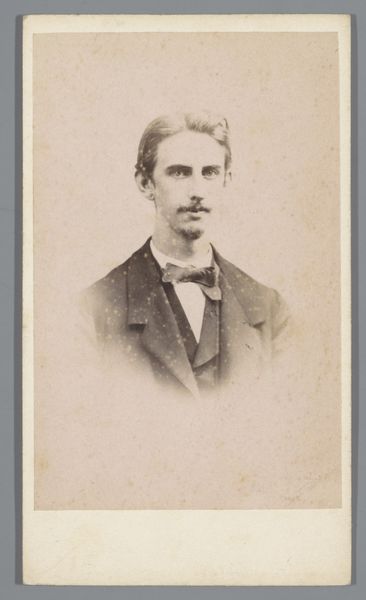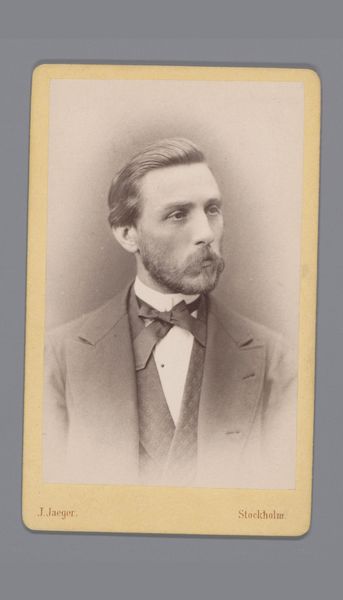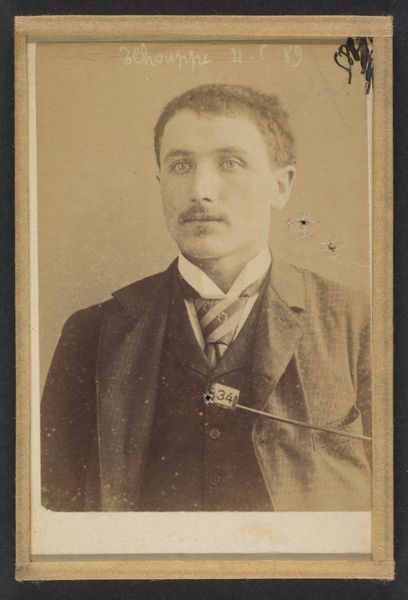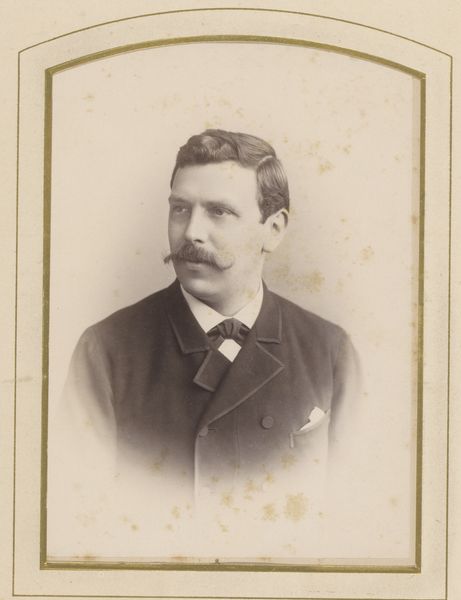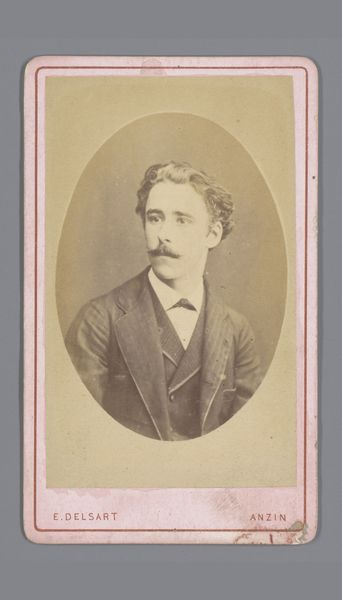
photography
#
portrait
#
photography
#
historical photography
#
19th century
Dimensions: height 89 mm, width 58 mm, height 105 mm, width 64 mm
Copyright: Rijks Museum: Open Domain
Editor: Here we have a studio portrait of a man with a tie, likely taken between 1880 and 1920 by Andries Hermanus van Dijk. It's a photographic print, quite faded with age. What I find most striking is the subject's expression—so serious, so contained. How do you read the visual cues in this portrait? Curator: That gravity you perceive, it's fascinating. Think about the power imbued in the simple act of commissioning a photograph at this time. The man in the image actively participates in crafting his legacy. The suit and tie, beyond mere clothing, represent aspirations to bourgeois values, even, perhaps, respectability. Editor: So the photograph itself becomes a kind of emblem? Curator: Precisely. He consciously chooses how to be remembered. Consider, too, the averted gaze, avoiding direct eye contact, a frequent, albeit, mannerism in older photography. What emotional tenor does it convey to you? Editor: A certain humility, maybe, or reservedness. It's less confrontational, more contemplative. But also, perhaps, a hint of vulnerability. Curator: That vulnerability, seen through our contemporary lens, highlights a contrast with our modern obsession of image manipulation and idealization. The relative lack of retouching exposes what was perceived as the ‘true’ self in that period. A form of cultural truth we are, now, almost unaccustomed to viewing. The tie, then, might represent an attempt at ordered control, an effort at projecting composure. But we see that is just one dimension! Editor: It’s interesting to think about how even seemingly straightforward portraits contain layers of social and personal meaning that speak across time. Thank you! Curator: Indeed. And consider the ripple effect—each symbol interacts to resonate through history, sparking unique interpretations depending on the cultural context of the viewer. Fascinating, isn’t it?
Comments
No comments
Be the first to comment and join the conversation on the ultimate creative platform.
